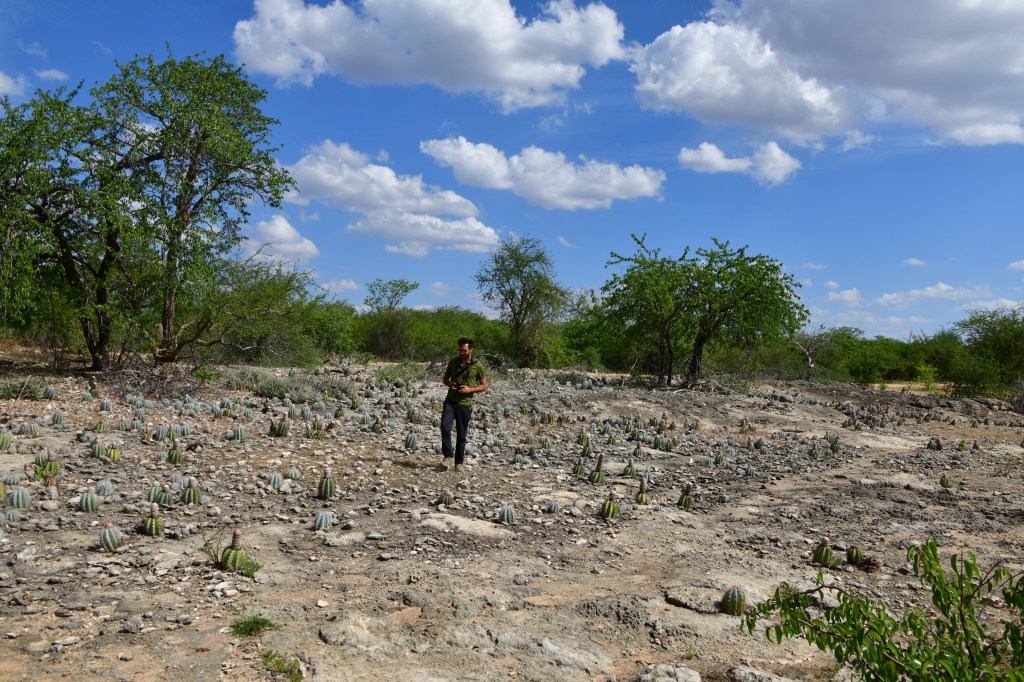Thursday 22 November 2018 – Morro do Chapéu – Irece
Today we went west towards Irece to check on Melocactus azureus to see what had changed, if anything, since our visit here on 7 January 2010.
Then, Marlon had proposed a day of exploring by visits to some dozen locations that on Google Earth looked similar to known localities of M. azureus in the area.
Quoting from my report of 7 January 2010:
‘Nigel Taylor and Daniela Zappi in ‘The Cacti of Eastern Brazil’ (2004) write regarding the conservation status of M. azureus:
‘Conservation ex situ may be the only viable option unless populations discovered in 2002 can be adequately protected….
… Specifically for Melocactus azureus, whose known habitats are in imminent peril of destruction and hold wild populations that are highly fragmented or numbering only tens of individuals.’
The report for 7 January 2010 was quite straight forward in terms of reporting plants. We made 11 random stops (S1667 to 1677). At all stops we found Melocactus azureus, not in their tens, but in their tens of thousands! More over, we could see no good reason why this would be any different for the locations that we drove by without stopping, due to lack of time. Great news for the conservation status of this taxon. ‘
And yet, some ten years later, this positive outcome has not yet filtered through to the official websites that report such matters.
This time, we made just two stops:
S3702 was one of the 5 locations along the side of the main road, reported in 2010. Not much appears to have changed since then, except that the amount of rubbish – shredded plastic carrier bags, plastic drink bottles, discarded textiles etc – had increased dramatically, so that we had to do a fair amount of rubbish clearing before photographing the cacti.

S3703 was for one of the ten new locations visited in 2010. Here too, nothing appeared to have changed. The terrain was the usual eroded limestone pavements, home to upto close to a million plants. Not a scientific report, but I guess that approximately 10-15% of plants had the azure blue coloured epidermis that gave this plant its name. It seems that young plants have the most-azure epidermis, but that this begins to fade once plants reach maturity and form a cephalium.


